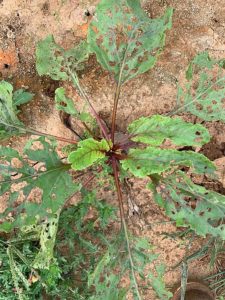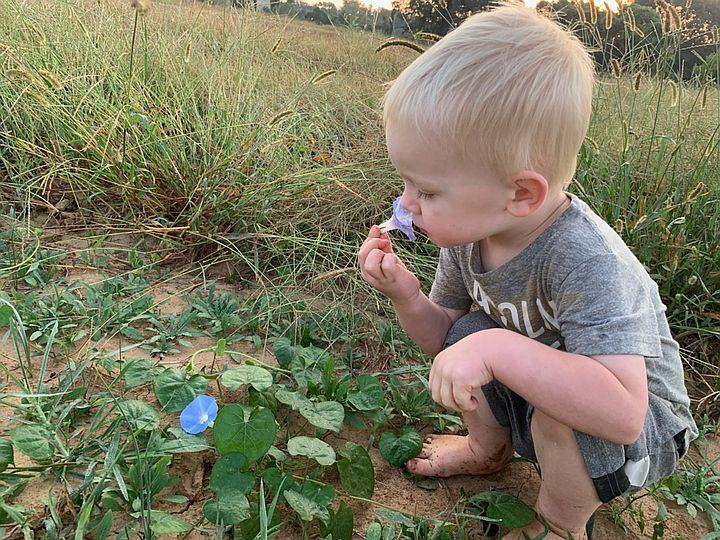Some Very Hungry Caterpillars

I knew the armyworms were coming when the purslane started to disappear. Maybe I didn’t know, but I suspected. I said to myself, “that looks like armyworms. I bet this fall is going to be a rough one.” But that was over a month ago, and things were a bit crazy. I was busy. And I was tired. It didn’t have the time or energy to think about what we would do if we had an armyworm explosion like we did three years ago.
Armyworms aren’t worms at all, but caterpillars. The adult is a moth. The moths blow in on the wind, meaning massive infestations can come literally out of the blue. The whole lifecycle of an armyworm is a mere 30 to 40 days, of which they spend two to four weeks as a munching caterpillar after hatching from egg clusters layed on the underside of leaves.
We get by with a little help from our friends
Three years ago when the armyworms came it started with the crab grass. There was a lot of crabgrass, particularly growing in the garden pathways. But something was eating it. Hordes of tiny caterpillars. Suddenly, all our weeds were gone. That seemed like a good thing. But once the grass was gone, they moved on to our crops. We tried to control them. We sprayed Bt and pyrethrin and I don’t remember what else. But nothing made a lick of difference. They ate their way across the field and then just as suddenly as they had appeared, the caterpillars were gone.
They arrived all of a sudden again this year. We sprayed Bt – our best defense against caterpillars – but it was totally ineffective. I was in a panic. They were everywhere I looked. I squished thousands of them, knowing it was futile because there were probably 1,000 more for every one I squashed. I asked for help from a community of small farmers that we are part of and Ray Tyler of Rose Creek Farm came to my rescue. Armyworms had arrived uninvited on his farm, too, but unlike me he was actually doing something that worked.
A Tropical Tree
The neem tree is native to the Indian subcontinent. The seeds are pressed to produce an oil that contains a chemical compound called azadirachtin. Azadirachtin is a growth inhibitor

that affects many different insect species, including armyworms. While I had used neem oil in the past, there are organic insecticides available with the isolated azadirachtin as the active ingredient, making them more concentrated and more effective.
Ray has suggested we add an insecticide with azadirachtin to our spray protocol. We ordered in and anxiously waited for it to arrive. I had nightmares about armyworms. Part of the reason I didn’t write a newsletter last week is because we were still waiting to see if the azadirachtin was working. Since it is a growth inhibitor, it does not kill the caterpillars on contact. We had to wait a few days to see if the caterpillars started to disappear. Now it is obviously that it is working. The beets are even growing new leaves. We are still finding caterpillars.
The saga continues
Armyworms are generalists with diverse tastes. This year they arrived first in the beets, peppering them with holes. The young beets in the high tunnel were completely defoliated. They also ravaged the tomatoes and the peppers, causing significant losses in both. Now, we are finding them in the cabbage. The crabgrass around the cabbage, kohlrabi and napa cabbage is full of them. Suddenly, the eggplant is full of armyworms, too. We control them in one place and they just move over. But at least we can control them.
Small & Full Shares
- Green Cabbage
- Green Beans
- Arugula and Mizuna Salad Mix
- Crunchy King Radish
- Eggplant
- Assorted Tomatoes
- Mustard Greens




You must be logged in to post a comment.